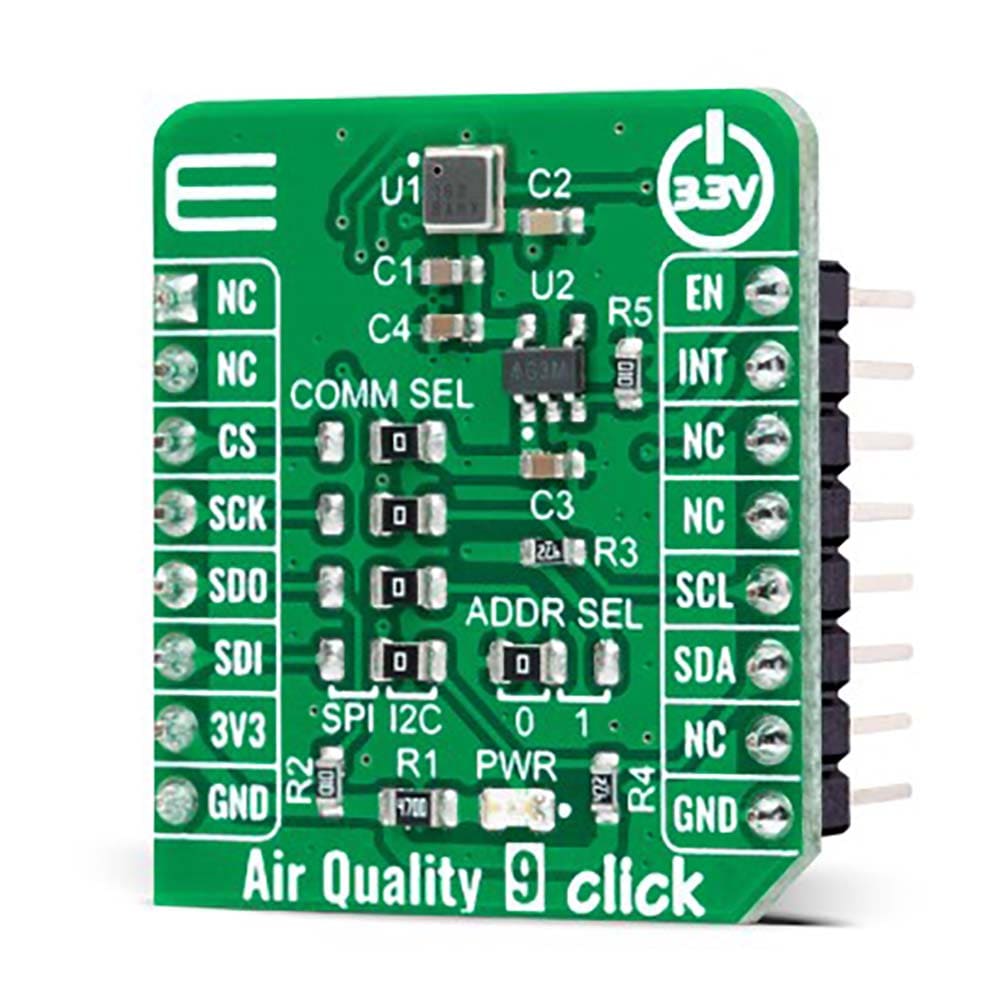
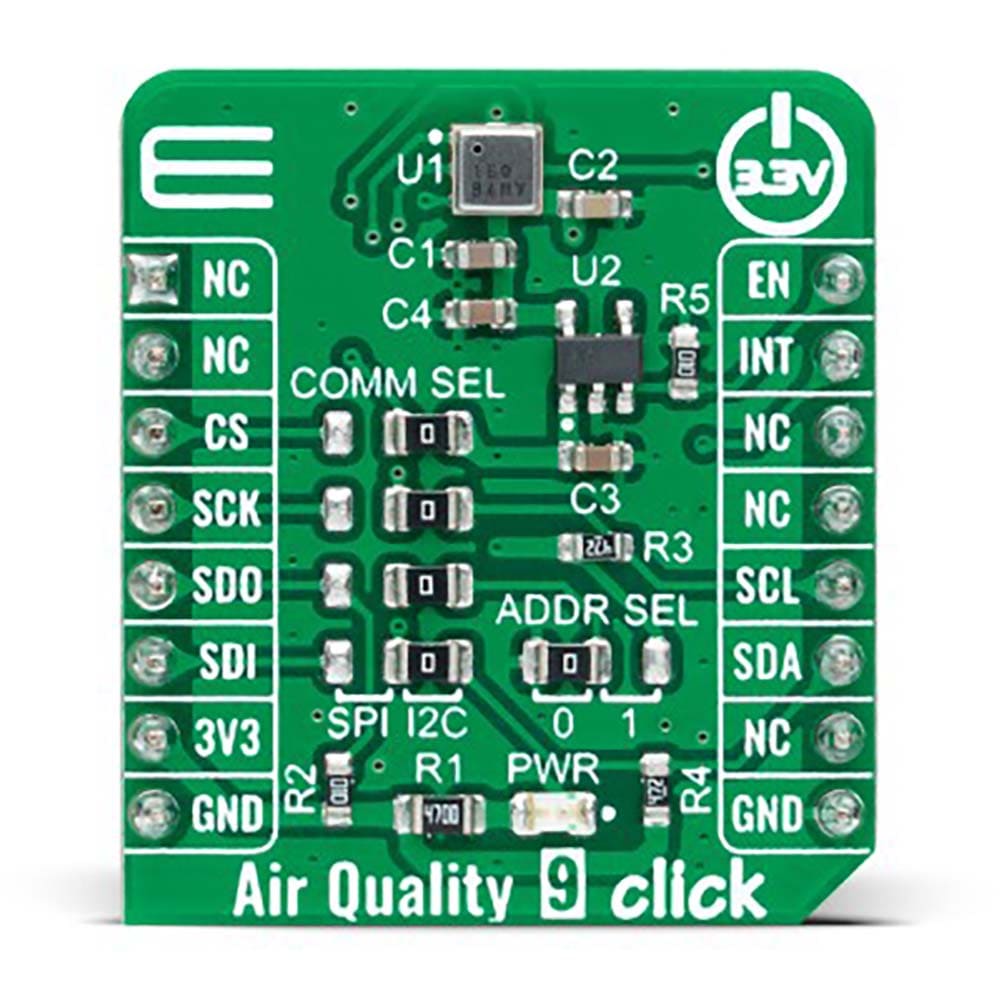
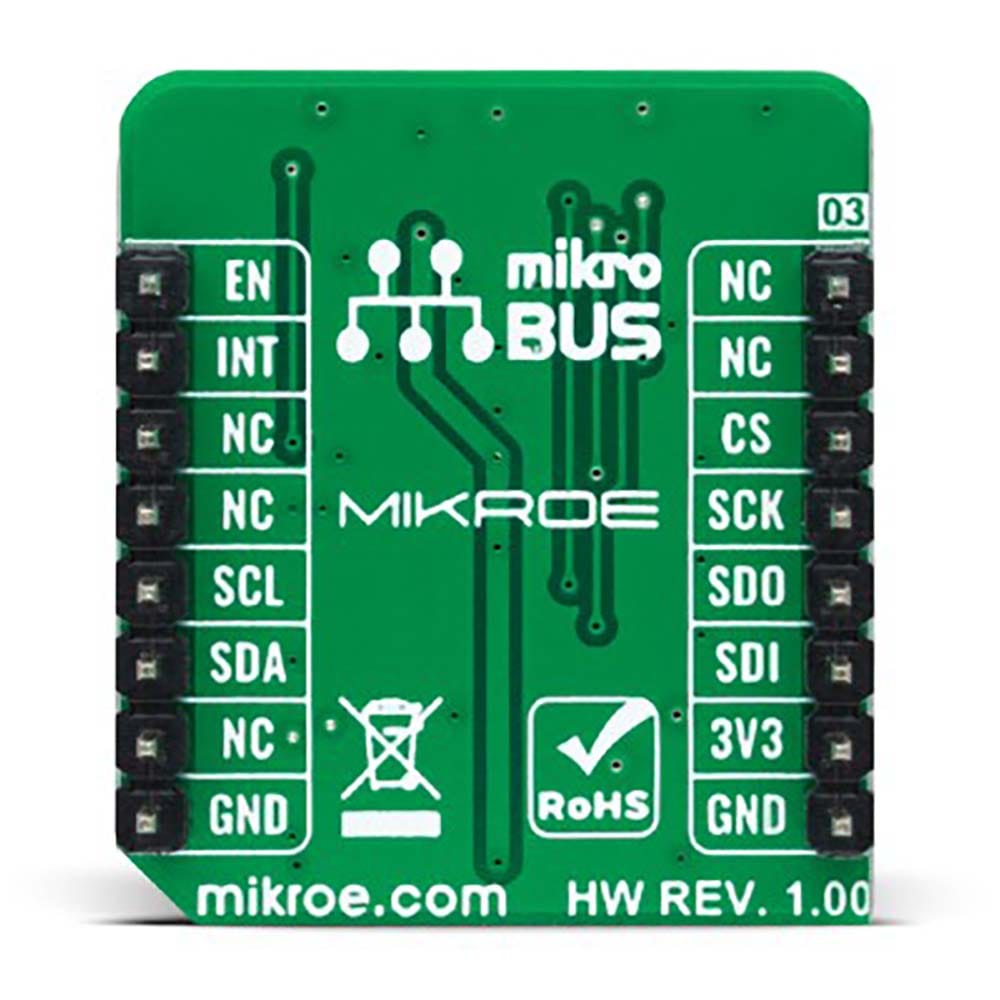
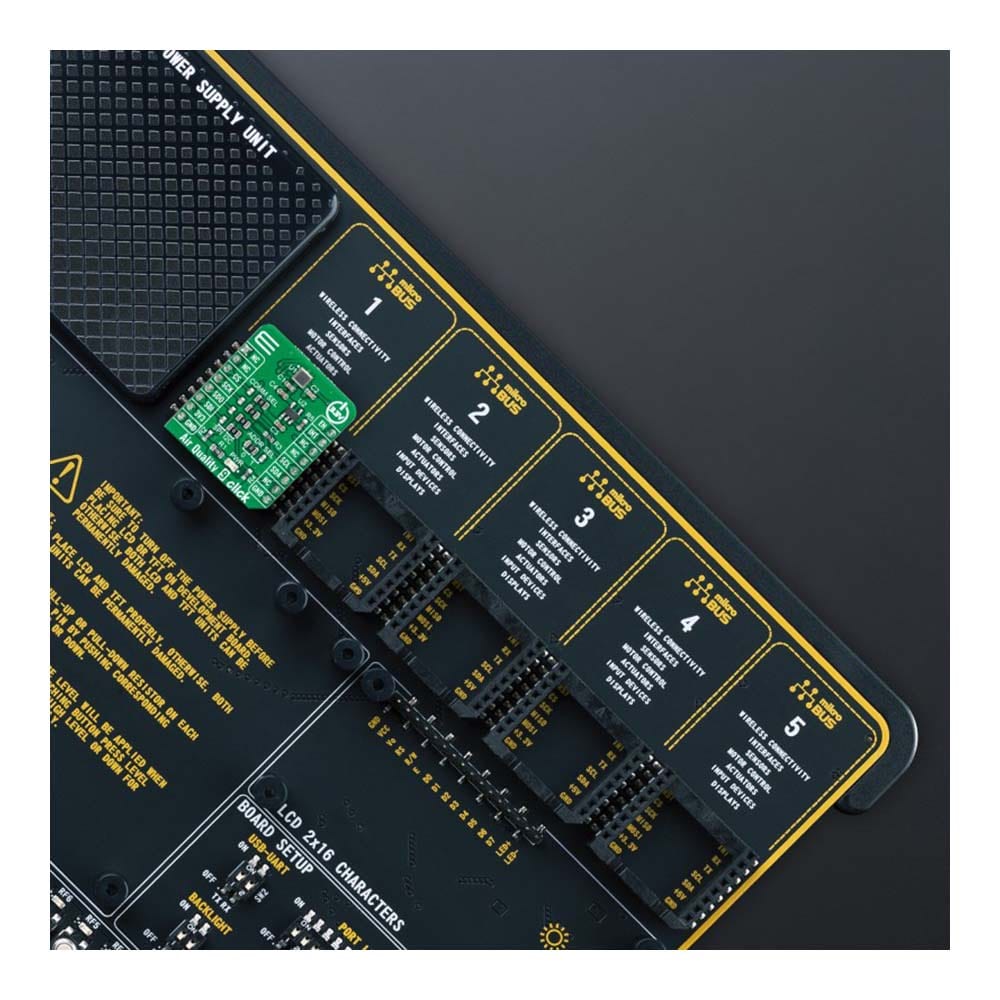
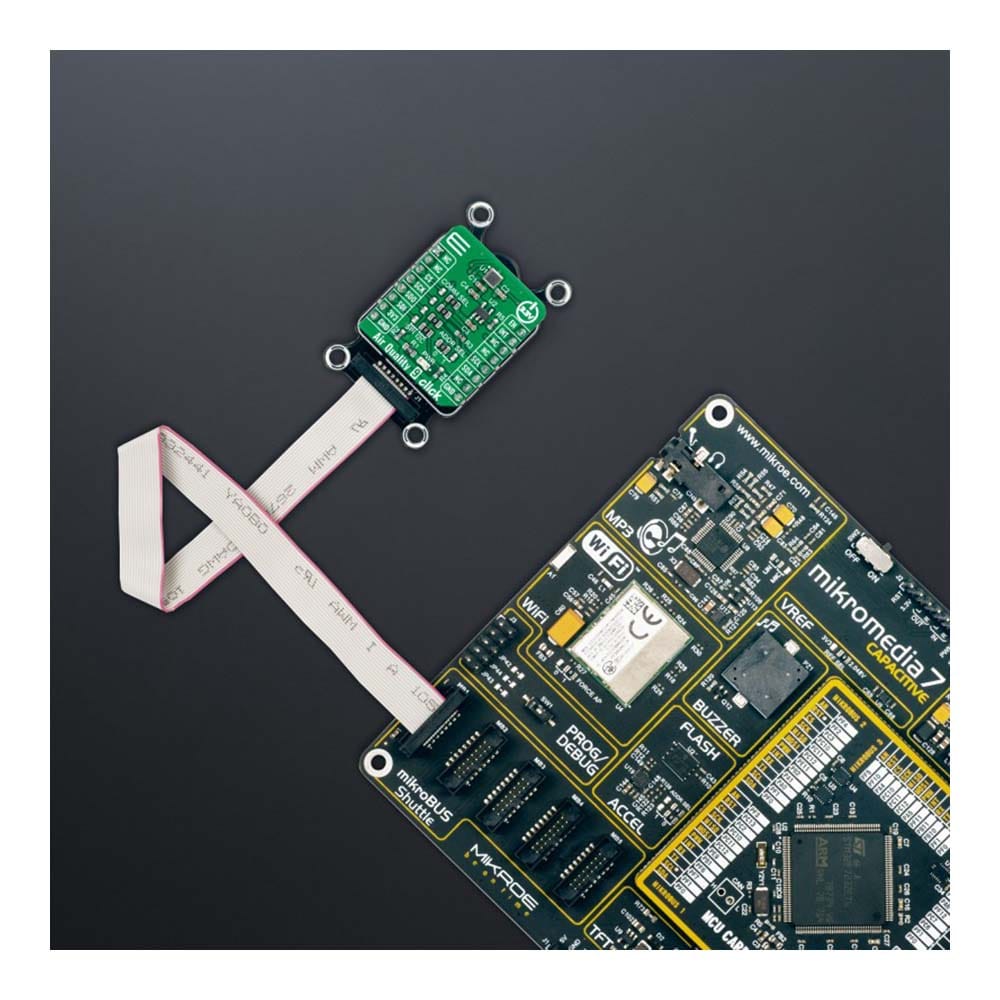
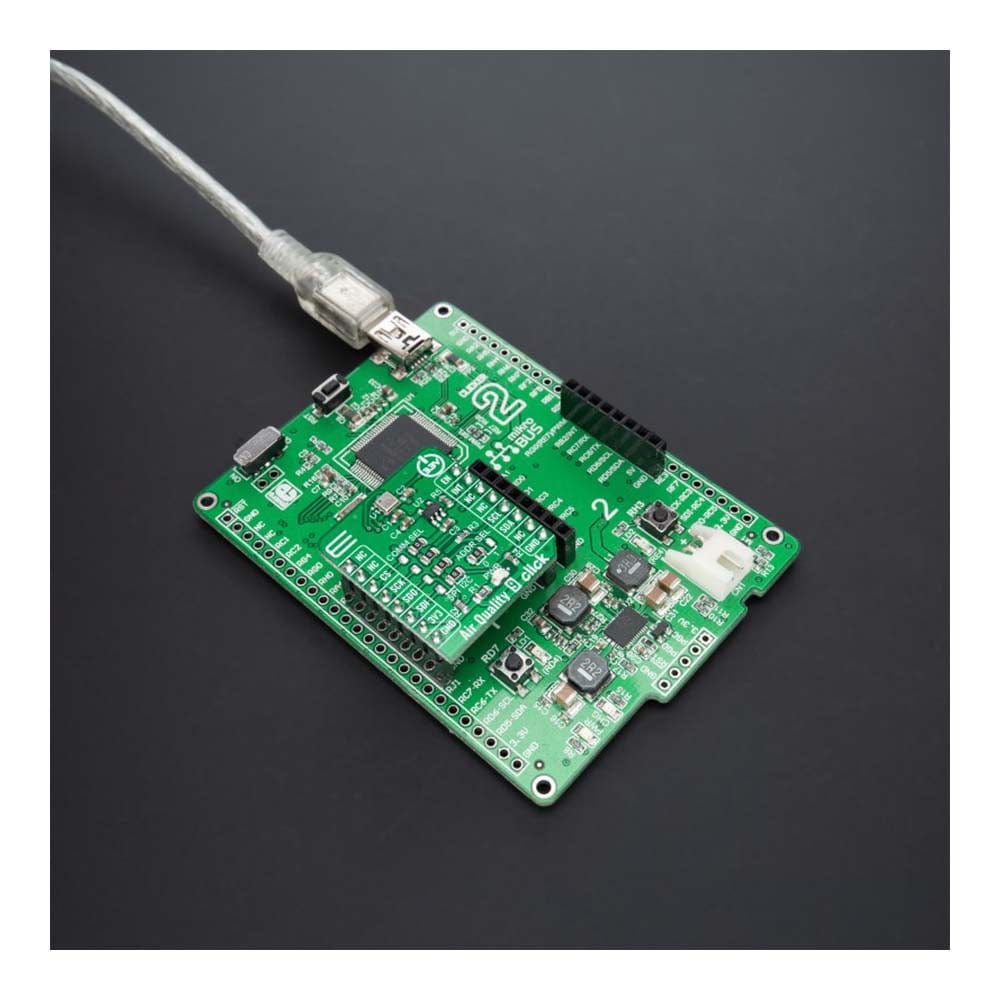
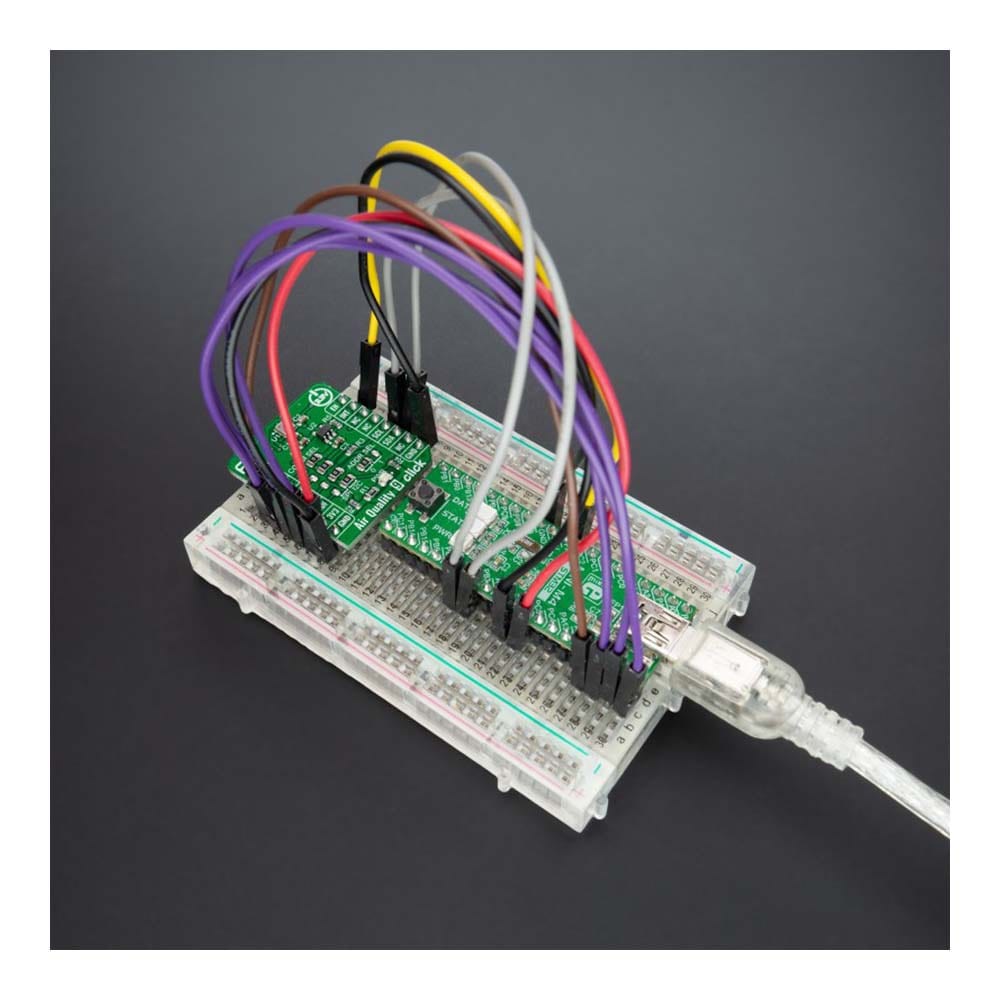
Overview
The Air Quality 9 Click Board™ is a compact add-on board containing a best-in-class air-quality sensing solution. This board features the ENS160, a digital multi-gas sensor solution based on metal oxide (MOX) technology with four MOx sensor elements from ScioSense. Each sensor element has independent hotplate control to detect a wide range of gases. The ENS160 series features TrueVOC™ air quality detection and supports intelligent algorithms, which calculate CO2 equivalents, TVOC, air quality index (AQI), and perform humidity and temperature compensation. This Click board™ is interface-configurable and characterized by outstanding long-term stability and lifetime. This Click board™ makes an excellent choice for detecting unhealthy air conditions, such as personal air-quality monitors, HVAC, smart thermostats, and other air quality-related applications.
The Air Quality 9 Click Board™ is supported by a mikroSDK compliant library, which includes functions that simplify software development. This Click board™ comes as a fully tested product, ready to be used on a system equipped with the mikroBUS™ socket.
Downloads
Das Air Quality 9 Click Board™ ist eine kompakte Zusatzplatine mit einer erstklassigen Luftqualitätssensorlösung. Diese Platine verfügt über den ENS160, eine digitale Mehrgassensorlösung auf Basis von Metalloxid-Technologie (MOX) mit vier MOx-Sensorelementen von ScioSense. Jedes Sensorelement verfügt über eine unabhängige Heizplattensteuerung zur Erkennung einer Vielzahl von Gasen. Die ENS160-Serie verfügt über TrueVOC™-Luftqualitätserkennung und unterstützt intelligente Algorithmen, die CO2-Äquivalente, TVOC, Luftqualitätsindex (AQI) berechnen und Feuchtigkeits- und Temperaturkompensation durchführen. Dieses Click Board™ ist schnittstellenkonfigurierbar und zeichnet sich durch hervorragende Langzeitstabilität und Lebensdauer aus. Dieses Click Board™ ist eine ausgezeichnete Wahl zur Erkennung ungesunder Luftbedingungen, wie z. B. persönliche Luftqualitätsmonitore, HLK, intelligente Thermostate und andere luftqualitätsbezogene Anwendungen.
Das Air Quality 9 Click Board™ wird von einer mikroSDK-kompatiblen Bibliothek unterstützt, die Funktionen enthält, die die Softwareentwicklung vereinfachen. Dieses Click Board™ wird als vollständig getestetes Produkt geliefert und ist bereit für den Einsatz auf einem System, das mit der mikroBUS™-Buchse ausgestattet ist.
| General Information | |
|---|---|
Part Number (SKU) |
MIKROE-5060
|
Manufacturer |
|
| Physical and Mechanical | |
Weight |
0.02 kg
|
| Other | |
Country of Origin |
|
HS Code Customs Tariff code
|
|
EAN |
8606027389078
|
Warranty |
|
Frequently Asked Questions
Have a Question?
Be the first to ask a question about this.







